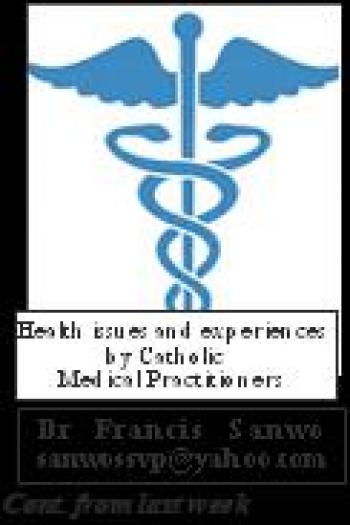NEWBORNS: REDUCING MORTALITY

|
Key facts Every year nearly 45% of all under 5 child deaths are among newborn infants, babies in their first 28 days of life or the neonatal period. Three quarters of all newborn deaths occur in the first week of life. In developing countries nearly half of all mothers and newborns do not receive skilled care during and immediately after birth. Up to two thirds of newborn deaths can be prevented if known, effective health measures are provided at birth and during the first week of life. The vast majority of newborn deaths take place in developing countries where access to health care is low. Most of these newborns die at home, without skilled care that could greatly increase their chances for survival. Skilled health care during pregnancy, childbirth and in the postnatal (immediately following birth) period prevents complications for mother and newborn, and allows for early detection and management of problems. In addition, WHO and UNICEF now recommend home visits by a skilled health worker during a baby’s first week of life to improve newborn survival. Newborns in special circumstances, such as low-birth-weight babies, babies born to HIV-positive mothers, or sick babies, require additional care and should be referred to a hospital. Causes Newborn, or neonatal, deaths account for 45% of all deaths among children under 5. The majority of all neonatal deaths (75%) occur during the first week of life, and between 25% to 45% occur within the first 24 hours. The main causes of newborn deaths are prematurity and low-birth-weight, infections, asphyxia (lack of oxygen at birth) and birth trauma. These causes account for nearly 80% of deaths in this age group. Prevention strategy: skilled health care at home Up to two thirds of newborn deaths could be prevented if skilled health workers perform effective health measures at birth and during the first week of life. Home visits by a skilled health worker immediately after birth is a health strategy that can increase newborn survival rates. The strategy has shown positive results in high mortality settings by reducing newborn deaths and improving key newborn care practices. While home births are very common in developing countries, only 13% of women in these countries receive postnatal care in the first 24 hours. Many mothers who give birth in health facilities cannot return for postnatal care because of financial, social or other barriers. The first days of life are the most critical for newborn survival. Home care visits should occur on days 1 and 3 of a newborn’s life, and if possible, a third visit should take place before the end of the first week of life (day 7). Newborns During home visits, skilled health workers should perform the following measures: promote and support early (within the first hour after birth) and exclusive breastfeeding; help to keep the newborn warm (promoting skin-to-skin contact between mother and infant); promote hygienic umbilical cord and skin care; assess the baby for signs of serious health problems, and advise families to seek prompt medical care if necessary (danger signs include feeding problems, or if the newborn has reduced activity, difficult breathing, a fever, fits or convulsions, or feels cold); encourage birth registration and timely vaccination according to national schedules; identify and support newborns that need additional care (e.g. those that are low-birth-weight, sick or have an HIV-infected mother); and if feasible, provide home treatment for local infections and some feeding problems. -To be continued
Neonatal jaundice Cont. from last week Diagnosis Clinical Assessment This method is less accurate and more subjective in estimating jaundice. Any of the following features characterizes pathological jaundice: Clinical jaundice appearing in the first 24 hours or greater than 14 days of life. Increases in the level of total bilirubin by more than 8.5 ìmol/l (0.5 mg/dL) per hour or (85 ìmol/l) 5 mg/dL per 24 hours. Total bilirubin more than 331.5 ìmol/l (19.5 mg/dL) (hyperbilirubinemia). Direct bilirubin more than 34 ìmol/l (2.0 mg/dL). Treatment The bilirubin levels for initiative of phototherapy varies depends on the age and health status of the newborn. In the 1950s, phototherapy was discovered, and became the standard treatment, Phototherapy The use of phototherapy was first discovered, accidentally, at Rochford Hospital in Essex, England. The ward sister (nurse) of the premature baby unit firmly believed that the infants under her care benefited from fresh air and sunlight in the courtyard. Although this led to the first noticing of jaundice being improved with sunlight, further studies only progressed when a vial of blood sent for bilirubin measurement sat on a windowsill in the lab for several hours. The results indicated a much lower level of bilirubin than expected based on the patient’s visible jaundice. Further investigation led to the determination that blue light, wavelength of 420-480 nm (peak 458 nm), caused transformation of the trans bilirubin to cis bilirubin, a soluble product that does not contribute to kernicterus Infants with neonatal jaundice are treated with colored light called phototherapy. Exposing infants to high levels of colored light changes trans-bilirubin to the more water-soluble cis-form which is excreted in the bilein Phototherapy works through a process of isomerization that changes trans-bilirubin into the water-soluble cis-bilirubin isomer. In phototherapy, blue light is typically used because it is more effective at breaking down bilirubin. Two matched groups of newborn infants with jaundice were exposed to intensive green or blue light phototherapy. The efficiency of the treatment was measured by the rate of decline of serum bilirubin, which in excessive amounts causes jaundice, concentration after 6, 12 and 24 hours of light exposure. A more rapid response was obtained using the blue lamps than the green lamps. Ultraviolet light therapy may increase the risk of skin moles, in childhood. While an increased number of moles is related to an increased risk of skin cancer, it is not ultraviolet light that is used for treating neonatal jaundice. Rather, it is simply a specific frequency of blue light that does not carry these risks. Increased feedings help move bilirubin through the neonate’s metabolic system.[26] The light can be applied with overhead lamps, which means that the baby’s eyes need to be covered. Exchange transfusions Much like with phototherapy the level at which exchange transfusion should occur depends on the health status and age of the newborn. Complications Prolonged hyperbilirubinemia (severe jaundice) can result in chronic bilirubin encephalopathy (kernicterus). Quick and accurate treatment of neonatal jaundice helps to reduce the risk of neonates developing kernicterus. Infants with kernicterus may have a fever or seizures High pitched crying is an effect of kernicterus Exchange transfusions performed to lower high bilirubin levels are an aggressive treatment. |
© 2024 - Catholic Archdiocese of Ibadan





